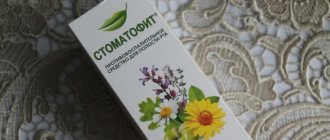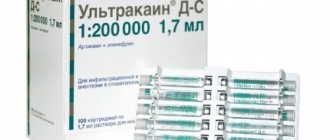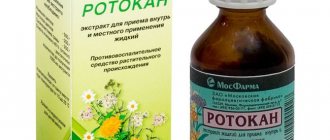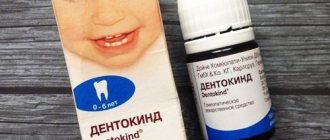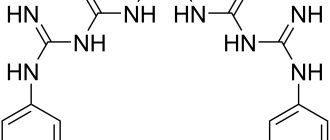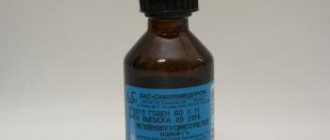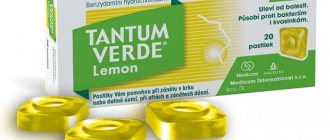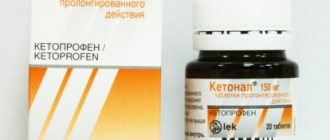Salvia officinalis (salvia) is a useful plant from the Lamiaceae family, which has long been used in official and folk medicine. Clary sage is also beneficial and a source of essential oil. The aroma of sage cannot be forgotten, and the appearance of the plant evokes a pleasant aesthetic sensation.
The homeland of this beautiful subshrub is the Mediterranean. Accordingly, the first to use the plant for medicinal purposes were ancient Greek and Roman healers, and they used sage in the widest range. The name comes from the Greek - “health and well-being”.
Structure
The plant is a perennial, reaching a maximum height of 75 cm. The root is hard and branched. Numerous stems have a tetrahedral shape and are densely dotted with oblong leaves. The flowers are irregular in shape, purple or pinkish-white, and collected in inflorescences. The fruit remains in the calyx.
Flowering begins in the second year of the growing season and continues from late May to July. Sage is cultivated in heat-loving regions of Russia, Ukraine, Crimea, and for decorative purposes. The leaves have a strong odor. The upper parts of the plant and leaves, as well as the inflorescences of clary sage, have medicinal value.
Chemical composition
Sage leaves contain:
phytonutrients;- alkaloids;
- flavonoids;
- phytoncides;
- resins;
- tannins;
- organic acids (ursolic, oleanolic, chlorogenic);
- elements Na, K, Ca, Cu, Fe;
- vitamins P, A, C, E, K, folic acid, B6, B2, B3 and PP;
- essential oil rich in terpene compounds;
- cellulose;
- bitterness.
Valuable essential oil is most actively produced during the fruiting period and is most contained in flowers.
Medicinal properties and contraindications of sage
Sage leaves have:
- astringent;
- anti-inflammatory;
- disinfectant;
- antimicrobial, especially against staphylococci and streptococci;
- tonic;
- hemostatic effect.
The essential oil of the plant is equivalent in effectiveness to Vishnevsky ointment, since it has an antibacterial and wound-healing effect.
Sage preparations are indicated for:
- Bleeding and inflammation of gum tissue and oral mucosa;
- Stomatitis;
- Sore throat;
- Bronchitis;
- Catarrhal phenomena of the upper respiratory tract;
- Stomach colic;
- Female infertility;
- Diabetes mellitus;
- Long-term non-healing wounds, burns, ulcers;
- Radiculitis, sciatica and other diseases.
Healing properties of sage
The medicinal qualities of this plant have been known for a long time. In folk and traditional medicine, aromatherapy, sage essential oil is widely used. In addition, its leaves are used as a seasoning for cooking meat and other products. It turns out that all harmful substances from the surface of fried meat are eliminated by adding sage. Sage extract and oil help strengthen the immune system. It is especially widely used for the treatment of the respiratory tract and ENT organs, for example, in the form of the drug “Sage” (lozenges). Due to its anti-inflammatory properties, this plant is good for oral diseases. That is why it is added to toothpastes and mouthwashes. Sage also has a beneficial effect on the gastrointestinal tract, soothing it and relieving spasms.
Contraindications and special instructions
You should not take sage in doses higher than recommended, or for more than 3 months continuously. Absolute contraindications to the use of sage preparations are:
- individual intolerance;
- epilepsy;
- convulsive readiness;
- acute nephritis;
- severe, persistent cough;
- pregnancy and lactation;
- Treatment is also not recommended for children under 5 years of age.
Contraindications
Despite the fact that sage tablets are a natural preparation, they still have a number of contraindications:
- Pregnancy . As mentioned above, sage has a negative effect on the fetus and the general condition of the woman, and can lead to pathology or miscarriage, therefore the use of the drug by pregnant women is strictly contraindicated.
- Diabetes . The medicine may contain glucose or sucrose, so people with diabetes should carefully read the instructions before use.
- Children under 5 years of age . It is difficult to explain to young children that the tablet needs to be dissolved; most often, they, mistaking it for candy, begin to chew and the drug does not have a significant therapeutic effect, that is, simply, taking it is useless.
- Lactation . It is not recommended to use sage for cough by nursing mothers, as it negatively affects the amount of milk, sometimes leading to its complete disappearance.
- Allergy . Certain components of the medicine can provoke the development of an allergic reaction in people with increased sensitivity. If it appears, then stop taking the drug immediately and you should seek help from a doctor.
So, sage tablets are a good medicine for coughs and a number of other diseases of the upper respiratory tract and inflammatory processes in the oral cavity. But it is better to use them in combination with other cold medications. In addition, sage is often used to eliminate various female ailments. It is also necessary to remember that this product has a number of contraindications, so when taking it, it is important to strictly follow the instructions.
Add a comment
Pharmacological preparations of sage
In addition to dry plant materials, sage is available in the following dosage forms:
Lozenges and lozengesThey are kept in the mouth without swallowing until the tablet/lozenge is completely dissolved. Lollipops with sage extract are also produced, which alleviate the symptoms of inflammatory processes in the throat. Contains dry extract and essential sage oil. Indicated in complex therapy of inflammatory diseases of the oral cavity and respiratory tract: stomatitis, gingivitis, pharyngitis, tonsillitis, laryngitis. |
Sage solution and sprayContains liquid plant extract. It is used to treat inflammatory diseases of the oral cavity and pharynx for rinsing, irrigating, and lubricating inflamed areas. |
Essential oilPresented with natural essential oil of the plant. It is used as an anti-inflammatory and effective antiseptic for inflammatory pathologies of the oral cavity (inhalation and gargling with oil), for the treatment of burns (at the healing stage), to combat acne, and strengthen hair roots. As an aromatherapy and bath additive: to relieve nervous tension, eliminate headaches, improve memory. It is a natural deodorant and also repels insects. Cannot be used internally! |
- Included in syrups for the treatment of diseases of the respiratory system and pharynx: Broncholin-Sage, Larinal, Bronchosip, etc.
- The plant extract is included in cosmetics (shampoos, creams, hair balms), toothpastes, and mouth rinses.
Sage “Green Doctor” lozenges No. 20
A country
Netherlands
The country of production may vary depending on the batch of goods. Please check with the operator for detailed information when confirming your order.
Compound
DOSAGE FORM: lozenges COMPOSITION PER TABLET: Active ingredients: Dry sage extract…………………………..……………………………………………………… ………………………..12.50 mg Sage essential oil………………………..……………………………………………………… ….………………..2.40 mg Excipients: ascorbic acid, malic acid, sorbitol, aspartame, magnesium stearate, colloidal silicon dioxide, honey flavor, quinoline yellow E-104, indigo carmine E-132. DESCRIPTION: The tablets are flat, round, with a beveled edge, bluish-green in color with lighter and darker inclusions, with a specific odor. Both sides of the tablet are engraved with “NP” on a wood background. RELEASE FORM: lozenges. 10 tablets per PVC/Al blister. 1, 2, 3, 4, 5 blisters in a cardboard box with instructions for use.
Pharmacological properties
A combined preparation containing a complex of biologically active substances. Has anti-inflammatory, antimicrobial, expectorant effects. Has astringent properties.
Indications for use
In the complex treatment of inflammatory diseases of the upper respiratory tract (tonsillitis, laryngitis, pharyngitis) and the oral cavity (stomatitis, gingivitis).
Contraindications
Increased individual sensitivity to the components of the drug, pregnancy, breastfeeding, children under 5 years of age, acute nephritis, fructose intolerance, phenylketonuria.
Mode of application
Locally. Keep in mouth until completely absorbed, without chewing. — Adults and adolescents over 15 years of age: 6 tablets per day at intervals of 2 hours. — Children from 10 to 15 years: 4 tablets per day with an interval of 3 hours. — Children from 5 to 10 years: 3 tablets per day with an interval of 4 hours. Duration of therapy is 5-7 days.
Side effect
Allergic reactions are possible. If side effects not described in these instructions occur, you should stop taking the drug and inform your doctor.
Overdose
To date, no cases of overdose have been registered.
Interaction
Taking salvia preparations may interfere with the effects of medications that act through GABA receptors (eg, barbiturates, benzodiazepines). Concomitant use with these drugs is not recommended. Sage preparations can interact with hypoglycemic and anticonvulsants, and enhance the sedative effect of other drugs and alcohol. This medicine may affect the absorption of iron and other minerals.
special instructions
If symptoms of the disease persist or the condition worsens while using the drug for 5-7 days, you should inform your doctor. INFLUENCE ON THE ABILITY TO DRIVE VEHICLES AND MECHANISMS: The use of the drug does not affect the ability to perform potentially hazardous activities that require increased concentration and speed of psychomotor reactions (driving vehicles, working with moving mechanisms).
Sage tea
- It has a pronounced anti-sweat effect that lasts for at least 2 hours. Recommended both for excessive sweating and for diseases accompanied by rapid sweating, for example, tuberculosis.
- Helps speedy recovery from bronchitis, bronchial asthma, diseases of the gastrointestinal tract, liver and gall bladder.
- Stops lactation if necessary.
- Strengthens hair follicles, stops premature baldness.
1 tbsp. dried raw materials or 1 bag of pharmaceutical tea, pour 1 glass of boiling water, leave for 15 minutes and drink a third of a glass three times a day before meals. The optimal duration of treatment is 2-3 weeks.
Sage tea
For external use:
- Promotes rapid healing of non-healing wounds (washing wounds, applying lotions).
- Eliminates thrush in children (mouth rinse).
- Sage helps with toothache, as well as in the treatment of gumboil and bleeding gums (rinsing).
- Reduces the severity of inflammatory changes in sore throat (irrigation and gargling).
- Improves hair condition, strengthens roots (rinse after washing with a light scalp massage).
For internal use:
- Normalizes the acidity of gastric juice in gastritis with low acidity.
- Helps with colitis, enterocolitis.
- Helps with coughs - sage not only facilitates mucus discharge, but also has an antimicrobial and anti-inflammatory effect.
1 tbsp. dry leaves pour a glass of boiling water and leave for 1 hour, filter. Take half a glass orally three times a day before meals. To treat cough, it is recommended to mix the infusion with warm milk in a 1:1 ratio.
Presence of contraindications
Although sage in the form of tablets or lozenges is a natural medicine, the instructions for use indicate the presence of contraindications.
The manufacturer indicates on the packaging that the drug contains no sugar. Often, lollipops or lozenges may contain glucose and sucrose. Therefore, people who suffer from diabetes are advised to take the medicine with caution, strictly as prescribed by the doctor.
Lollipops or tablets with sage are not recommended for use when suffering from acute nephritis. People with individual intolerance to the composition of the drug should find another medicine to treat the throat and respiratory tract.
If you doubt that the composition of tablets and lozenges is exclusively natural, then you can prepare medicine using sage yourself.
Sage herb for infertility
Entire books by traditional healers are devoted to treating infertility with the help of plants, which has a completely scientific explanation. The fact is that the phytohormones of sage are similar in structure to estrogens, female sex hormones, and therefore act in the body in a similar way (see also hog uterus for infertility). But before treatment, you should consult with a gynecologist about the possibility and advisability of herbal medicine.
Treatment regimen
Herbal medicine is prescribed for 10 days in the first phase of the menstrual cycle on the first day after the end of the next menstruation, i.e. approximately from the 5th to the 15th day of the cycle. If menstruation is absent for a long period of time, then treatment can be started on any day - in this case, the first day of treatment will be considered the 5th day of the cycle.
Preparation
One tbsp. dry leaves of the plant or a pharmaceutical tea bag are brewed with a glass of boiling water, left for 15 minutes, filtered. This is a daily portion, which is divided into three doses during the day and drunk 20 minutes before meals. A fresh infusion is prepared every day.
Simultaneous treatment with sage and hormonal drugs is not recommended. If undesirable reactions or allergies are observed during the treatment period, stop taking sage.
Efficiency
After 1-3 cycles (1-3 course doses, respectively), you should go for an ultrasound and assess the condition of the ovaries, endometrium and other signs of readiness for pregnancy. You should not take sage for more than 3 months, but if necessary, re-treatment is carried out with a break of 1 month.
Sage for colds
If you take into account all the contraindications, then using the medicinal properties of sage for a cold will help speed up recovery and eliminate the unpleasant symptoms of the disease. It is important that pharmaceutical herbs have a low price. It is brewed and drunk as tea, used for inhalation and rinsing, and used with hot milk and honey for coughs. Treatment with sage is effective for lingering colds, influenza, ARVI, and sore throat. The plant helps:
- eliminate sore throat;
- reduce sweating;
- relieve pain;
- calm irritation;
- make breathing easier;
- improve swallowing.
Sage in gynecology
Used to eliminate menopausal symptoms, it is especially effective when started at the earliest manifestations of menopause, even before the cessation of menstruation.
The plant is also effective in the treatment of premenstrual syndrome, accompanied by emotional instability, abdominal pain, etc.
It has beneficial properties for women who need to stop lactation, for which it is recommended to take tea or sage infusion 100 ml twice a day for 5-7 days, but usually the milk disappears already on the 3-4th day of intake.
At the same time, it is recommended to apply compresses to the mammary glands with sage oil (2-3 drops per 25 ml of vegetable oil) to prevent milk stagnation. Gauze is soaked in the resulting mixture of oils and applied to the chest for 1 hour, covered with cellophane. Once a day is enough.
